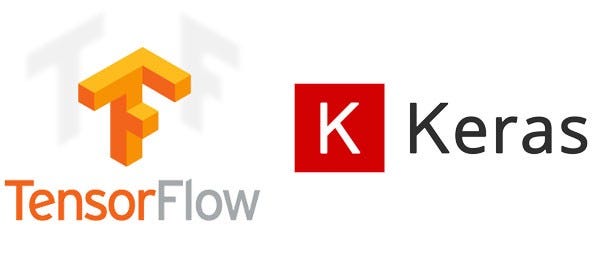
Frameworks play a crucial role in the domain of data science. Frameworks are a collection of packages and libraries which help in simplifying the overall programming experience for building a specific kind of application. Keras and TensorFlow are among the most popular frameworks when it comes to Deep Learning. In this article, we will jot down a few points on Keras and TensorFlow to provide a better insight into what you should choose.
TensorFlow & Keras
TensorFlow is an end-to-end open-source platform for machine learning. It’s a comprehensive and flexible ecosystem of tools, libraries and other resources that provide workflows with high-level APIs. The framework offers various levels of concepts for you to choose the one you need to build and deploy machine learning models.
For instance, if you need to do some large machine learning tasks, you can use the Distribution Strategy API in order to perform distributed hardware configurations and if you need a full production machine learning pipeline, you can simply use TensorFlow Extended (TFX). Some of the salient features are described below:
- Easy Model Building: TensorFlow offers multiple levels of abstraction to build and train models.
- Robust ML Production Anywhere: TensorFlow lets you train and deploy your model easily, no matter what language or platform you use.
- Powerful Experimentation For Research: TensorFlow gives you flexibility and control with features like the Keras Functional API and Model Subclassing API for the creation of complex topologies.
Keras, on the other hand, is a high-level neural networks library that is running on the top of TensorFlow, CNTK, and Theano. Using Keras in deep learning allows for easy and fast prototyping as well as running seamlessly on CPU and GPU. This framework is written in Python code which is easy to debug and allows ease for extensibility. The main advantages of Keras are described below:
- User-Friendly: Keras has a simple, consistent interface optimized for common use cases which provides clear and actionable feedback for user errors.
- Modular and Composable: Keras models are made by connecting configurable building blocks together, with few restrictions.
- Easy To Extend: With the help of Keras, you can easily write custom building blocks for new ideas and researches.
- Easy To Use: Keras offers consistent & simple APIs which helps in minimizing the number of user actions required for common use cases, also it provides clear and actionable feedback upon user error.
So Should You Go For Keras Or TensorFlow?
There are several differences between these two frameworks. Keras is a neural network library while TensorFlow is the open-source library for a number of various tasks in machine learning. TensorFlow provides both high-level and low-level APIs while Keras provides only high-level APIs. In terms of flexibility, Tensorflow’s eager execution allows for immediate iteration along with intuitive debugging. Keras offers simple and consistent high-level APIs and follows best practices to reduce the cognitive load for the users. Both frameworks thus provide high-level APIs for building and training models with ease. Keras is built in Python which makes it way more user-friendly than TensorFlow.
Wrapping Up
The most important point to understand here is that it is not truly accurate to compare Keras and Tensorflow as the former works as a wrapper to TensorFlow framework. There are positives and negatives in everything and must not judge depending upon only positives or the other. Machine Learning is a vast and complex area and like the saying “one size does not fit all”, different tasks in machine learning require different frameworks. Keras is designed for deep neural networks while TensorFlow is designed for machine learning applications. A researcher must choose a framework depending upon the task s/he is going to perform.
***Thank You***

0 Response to "Keras & TensorFlow"
Post a Comment